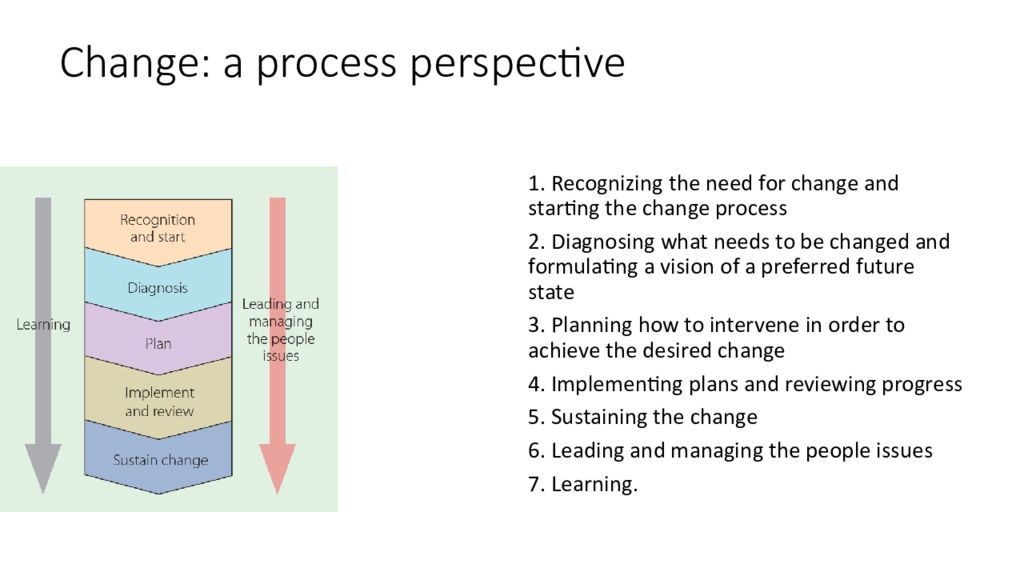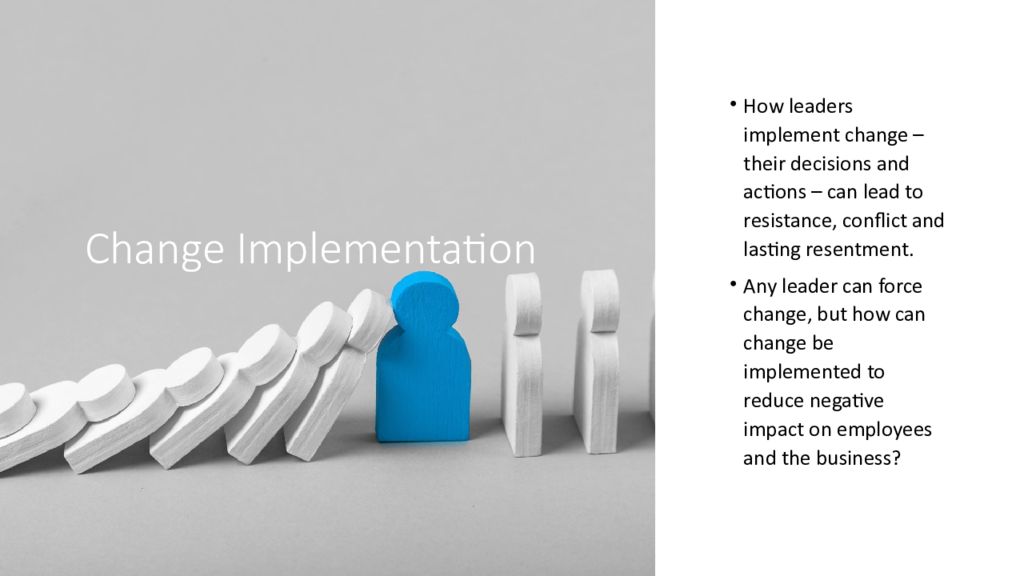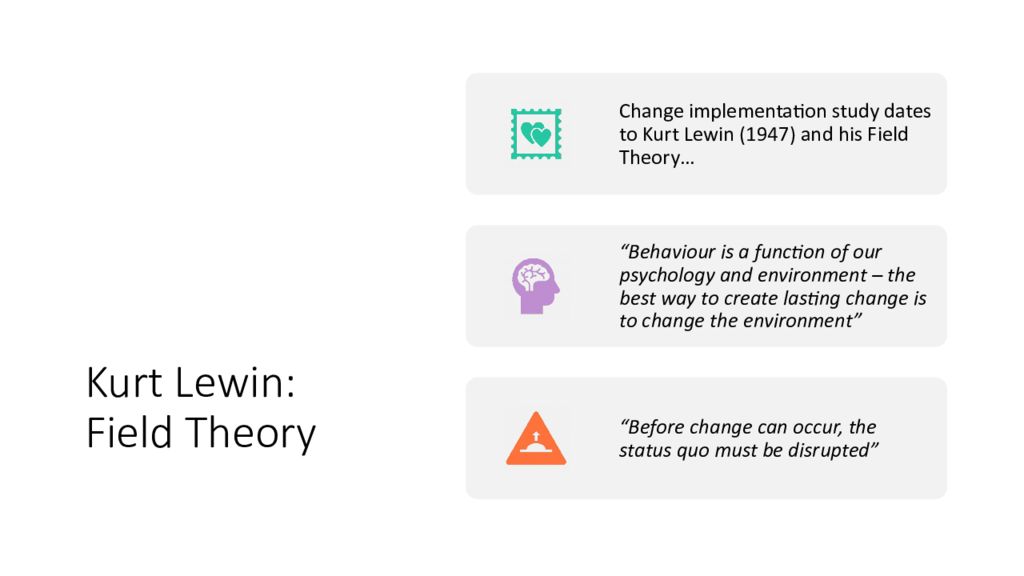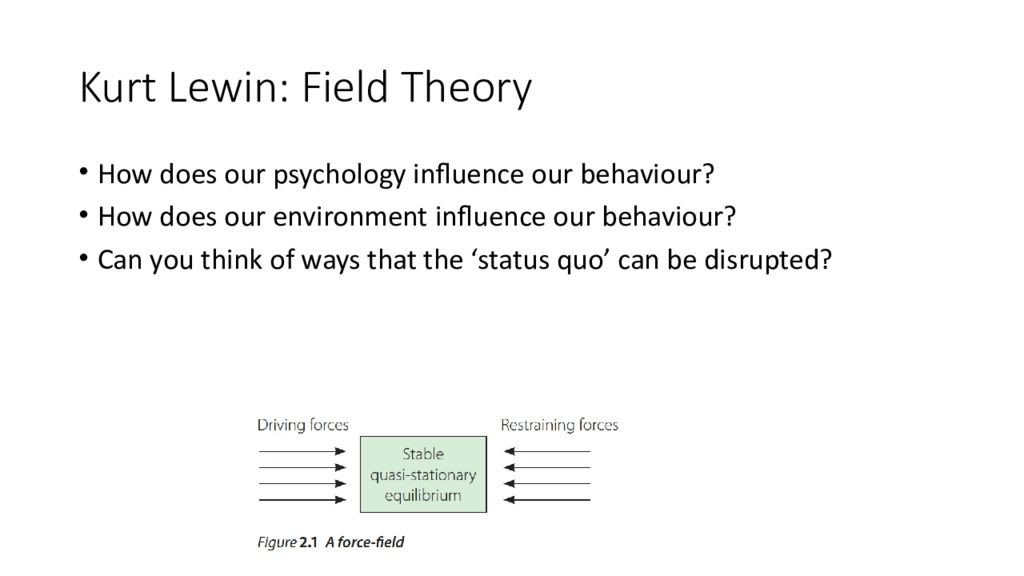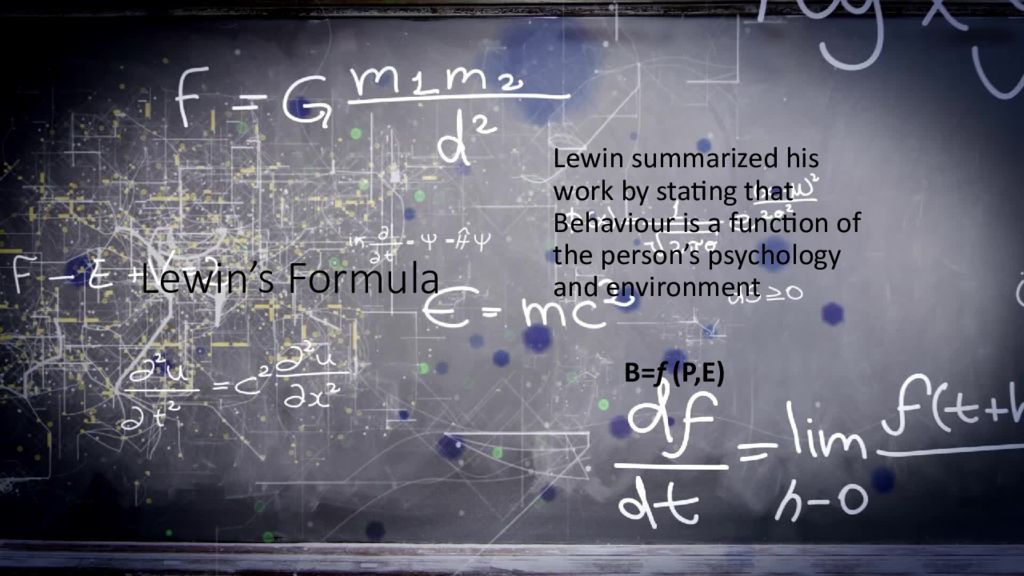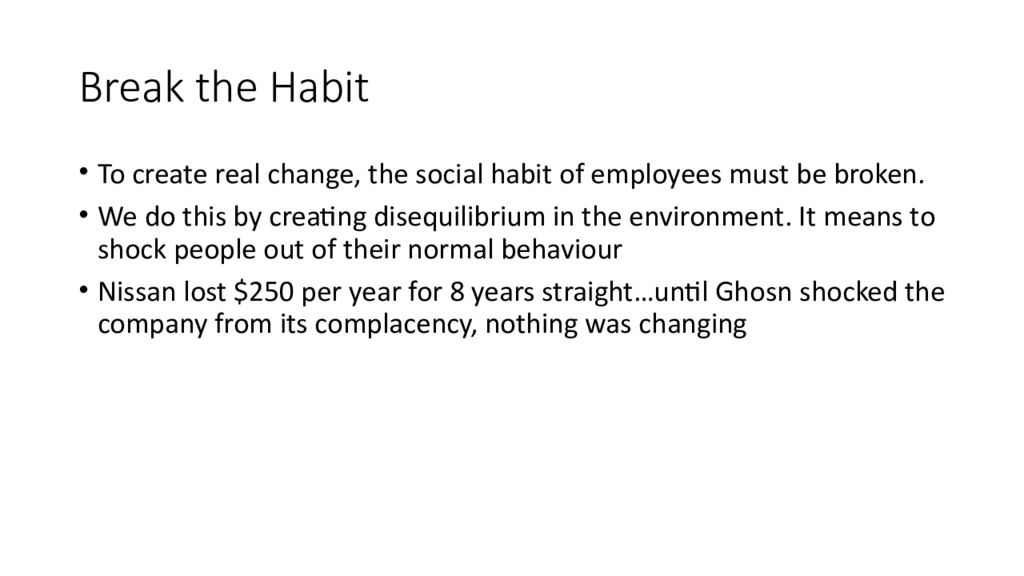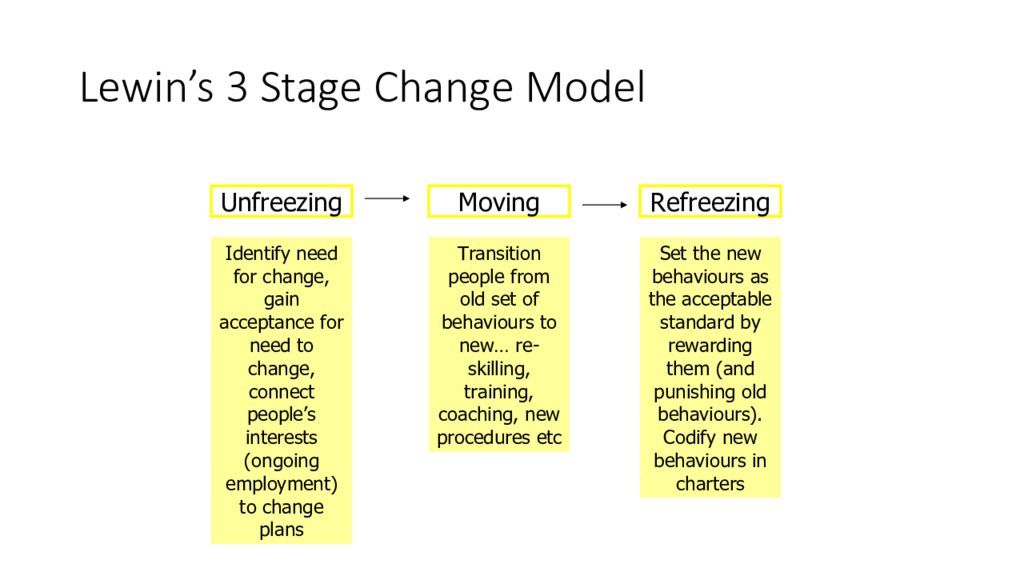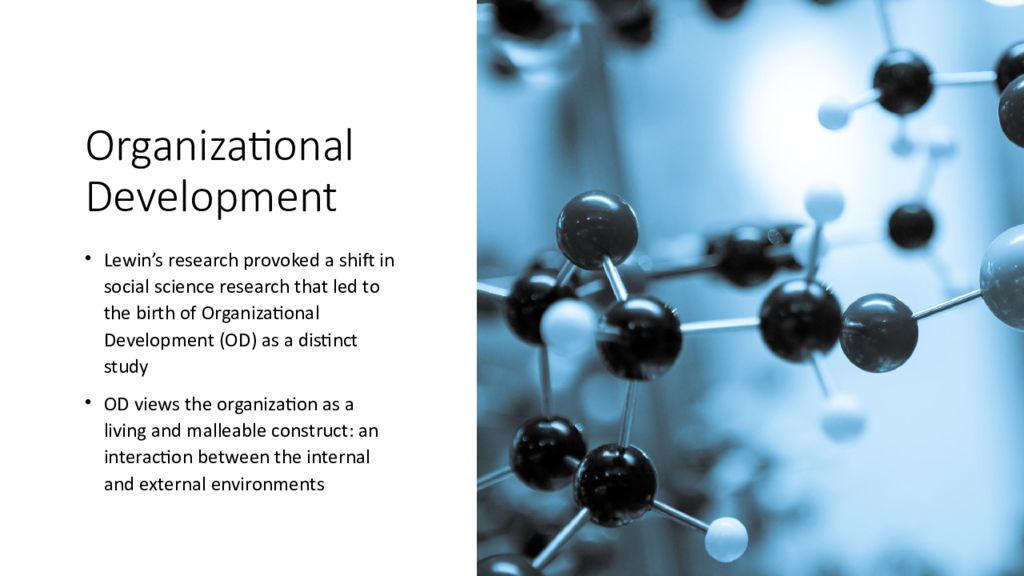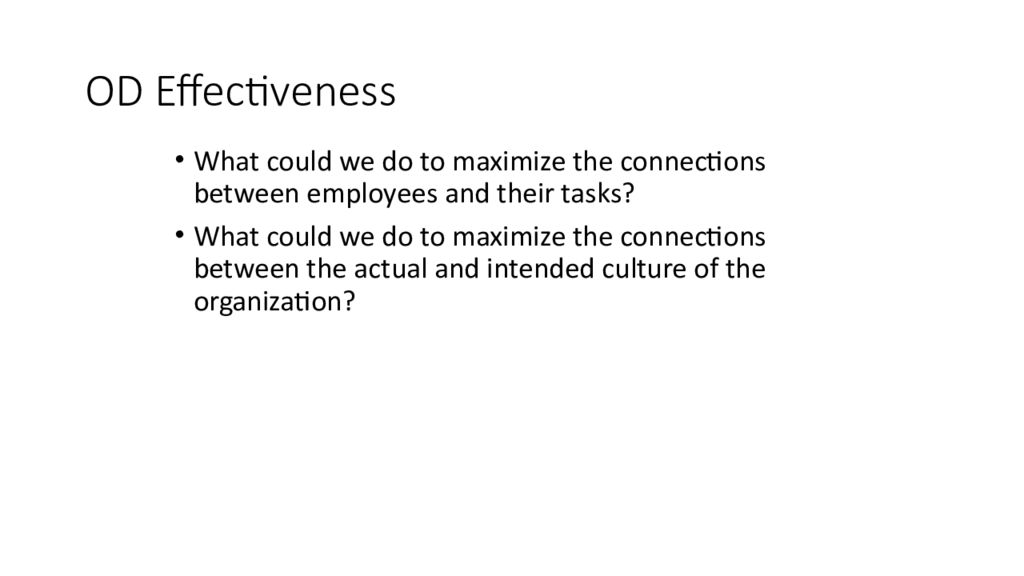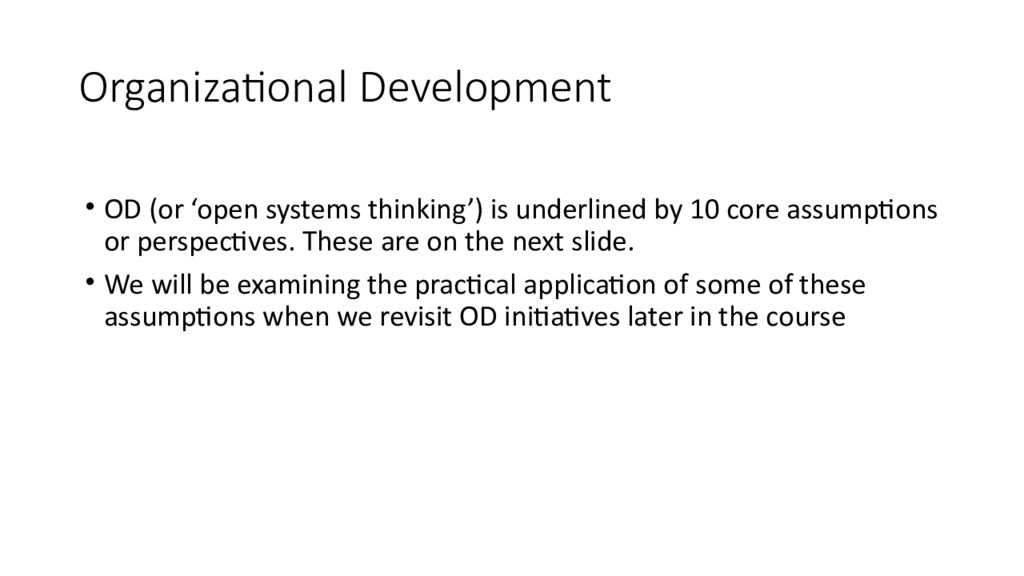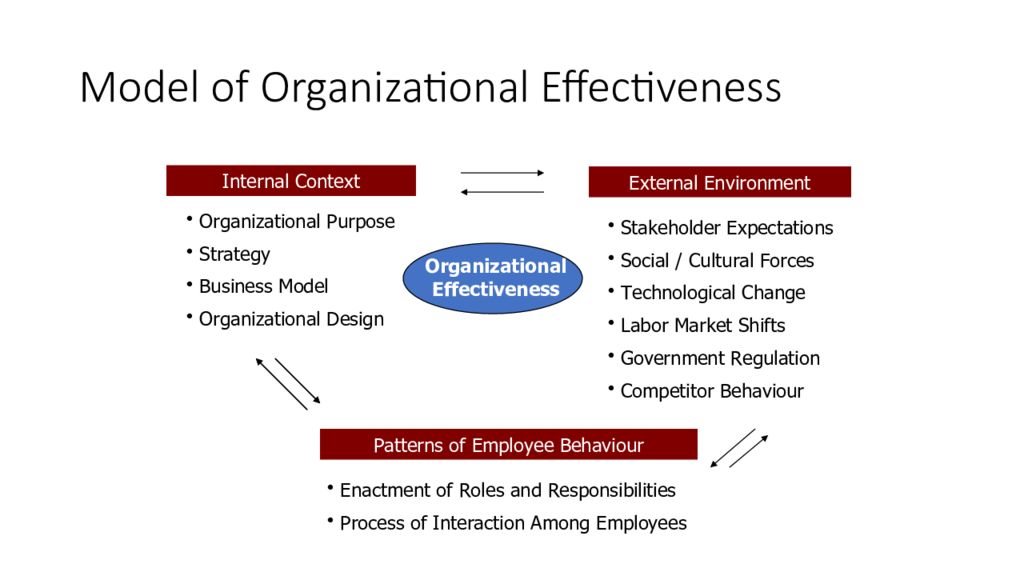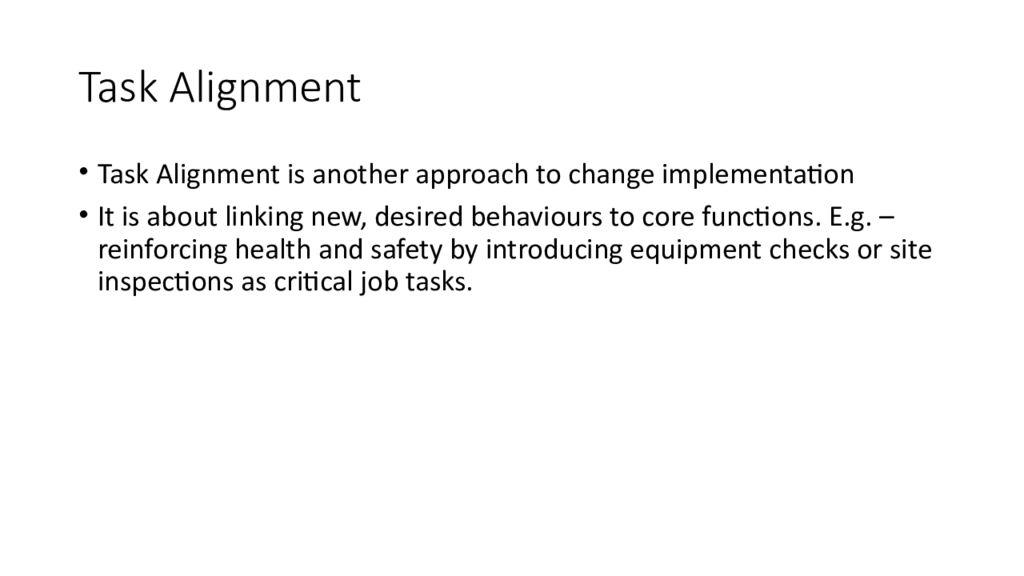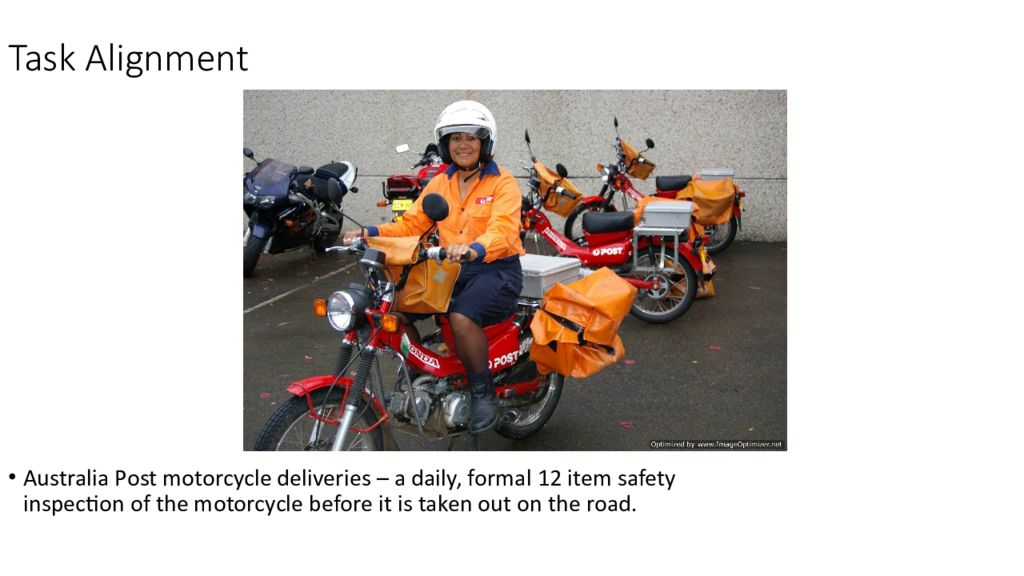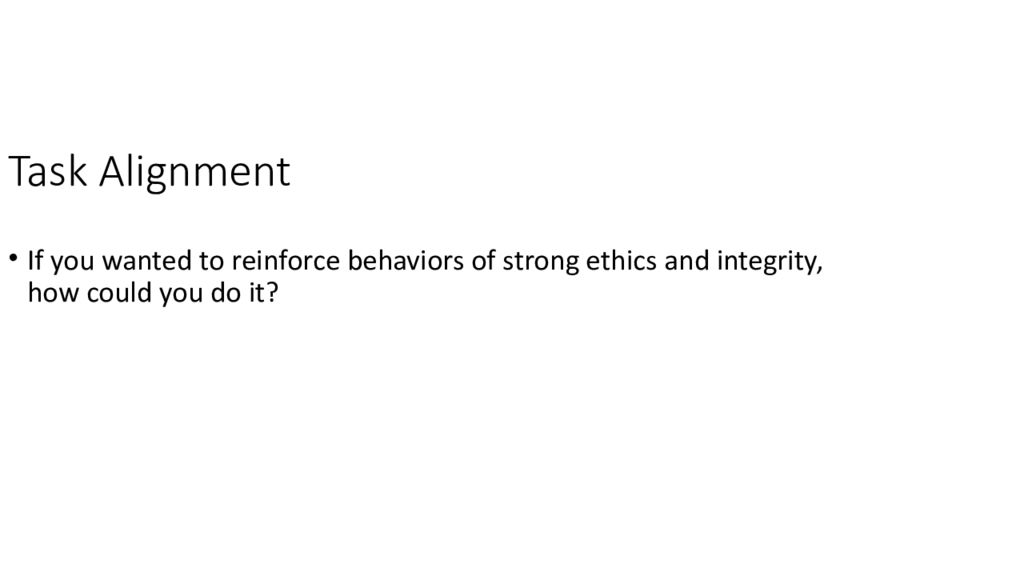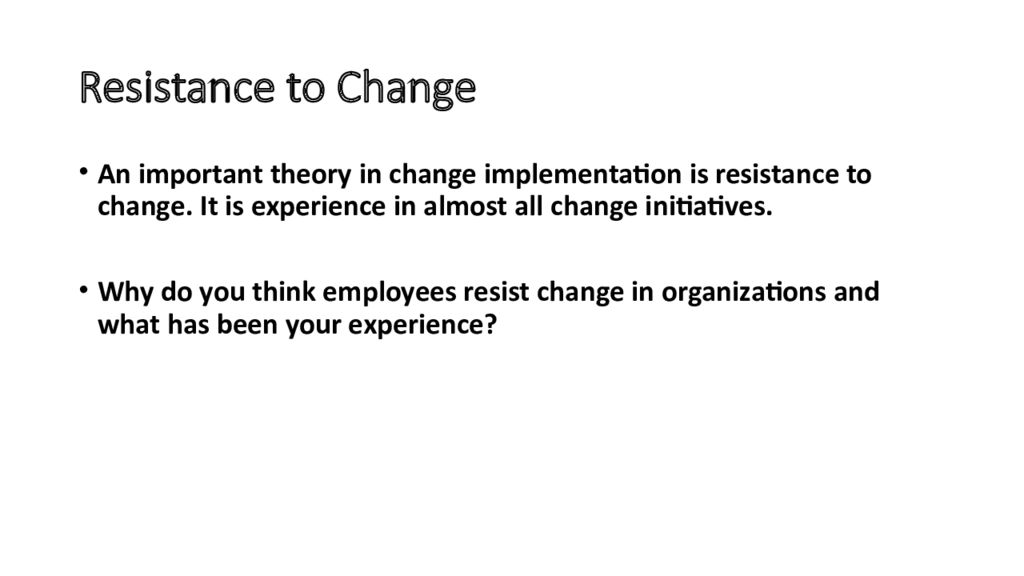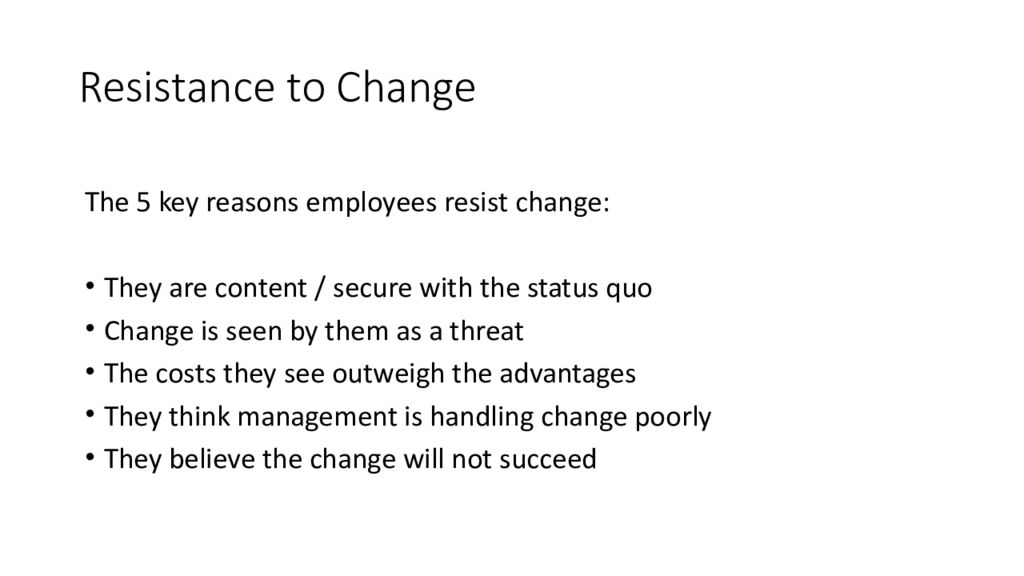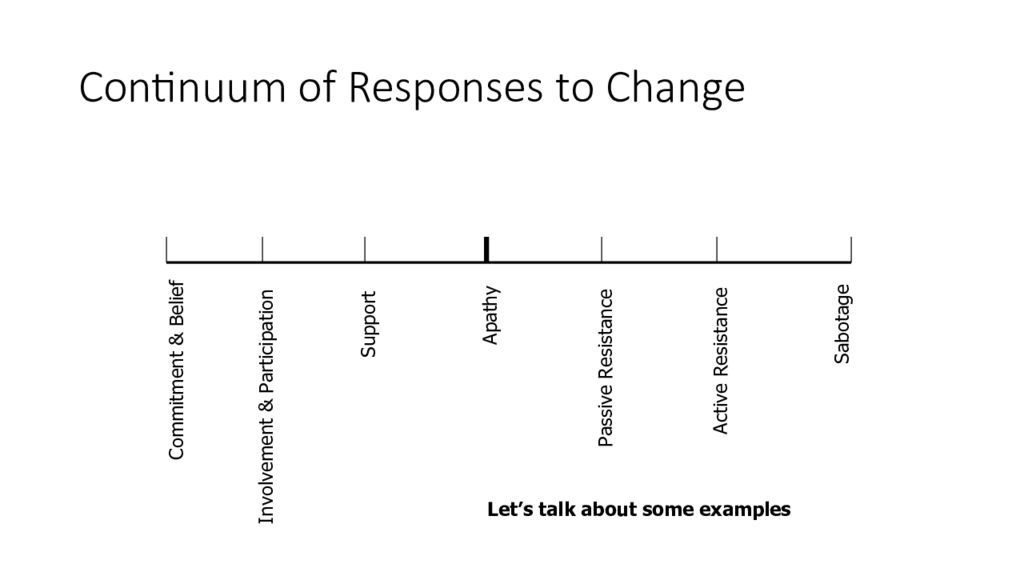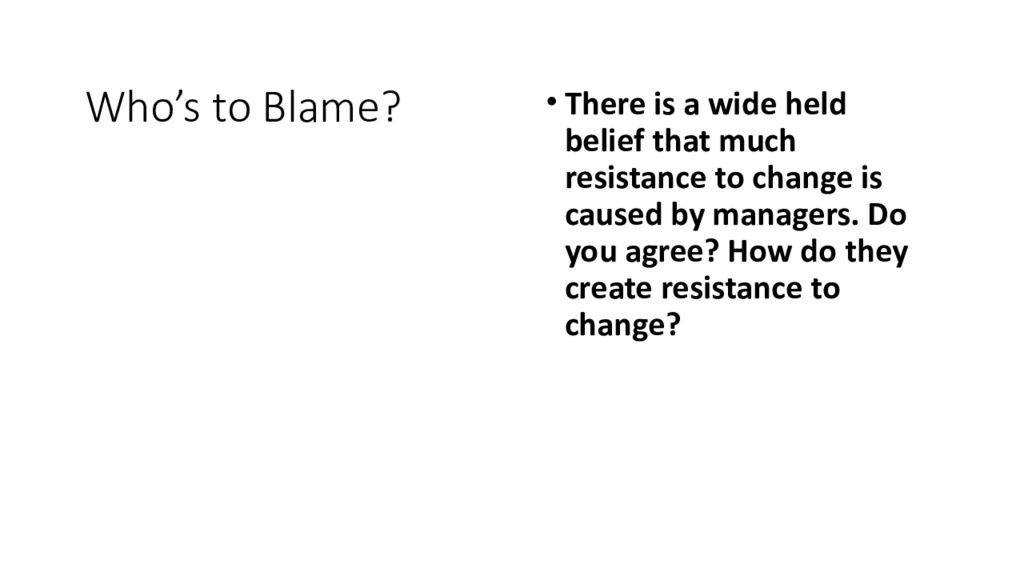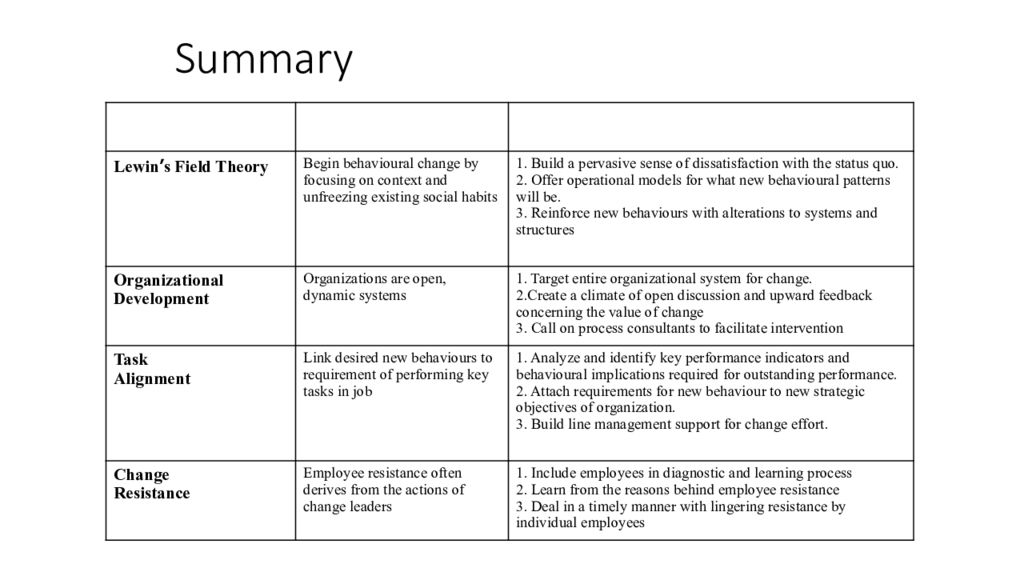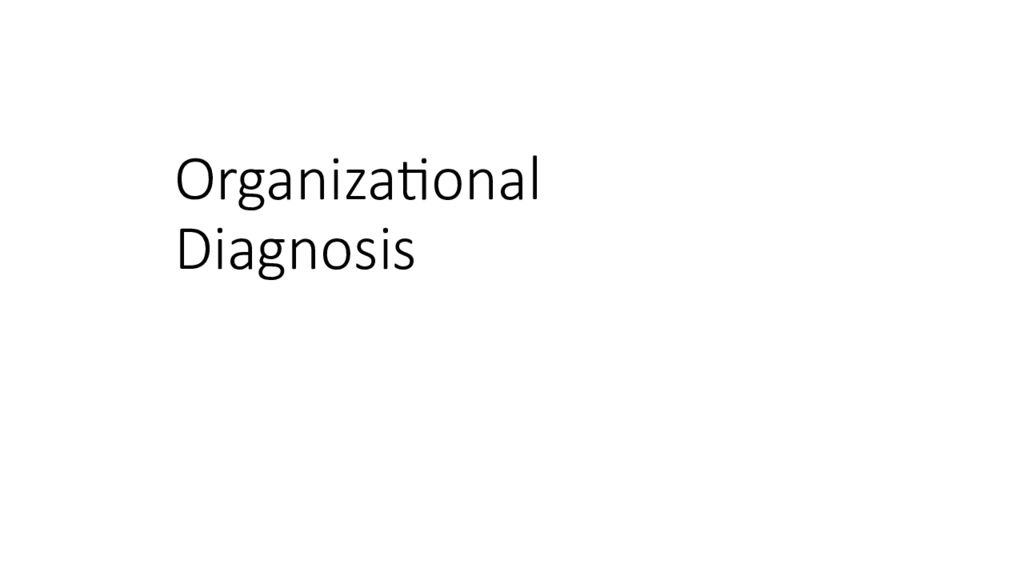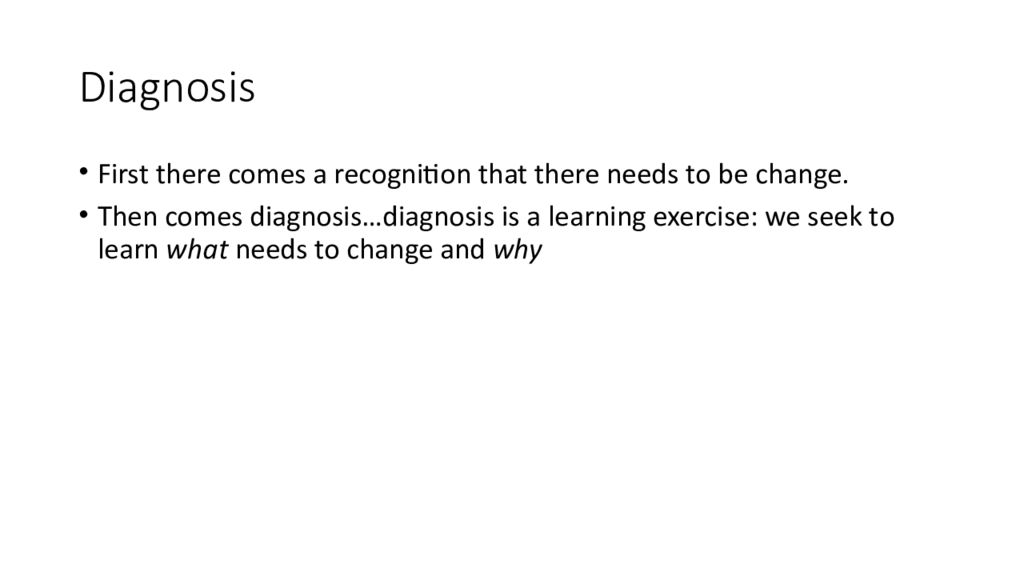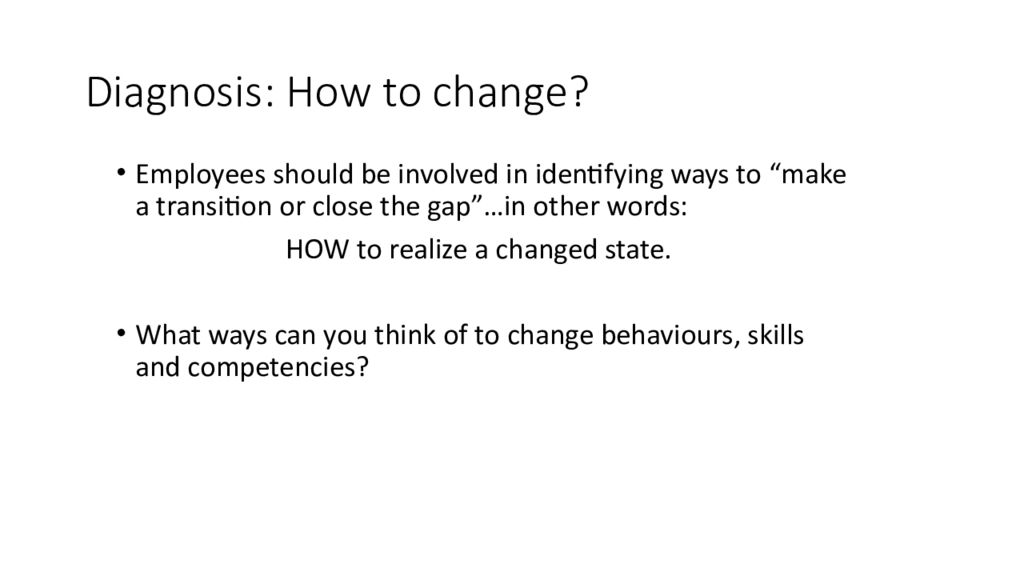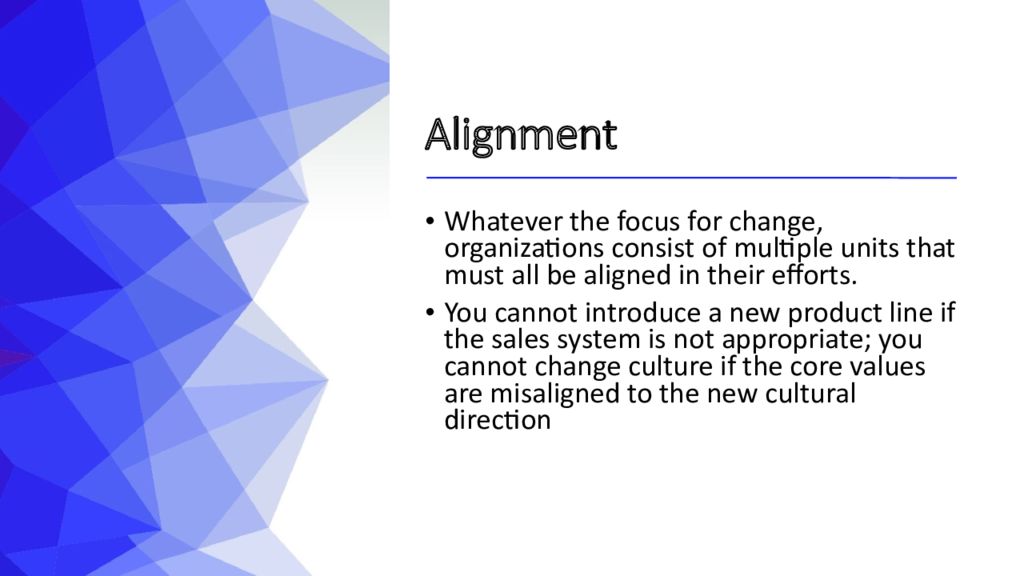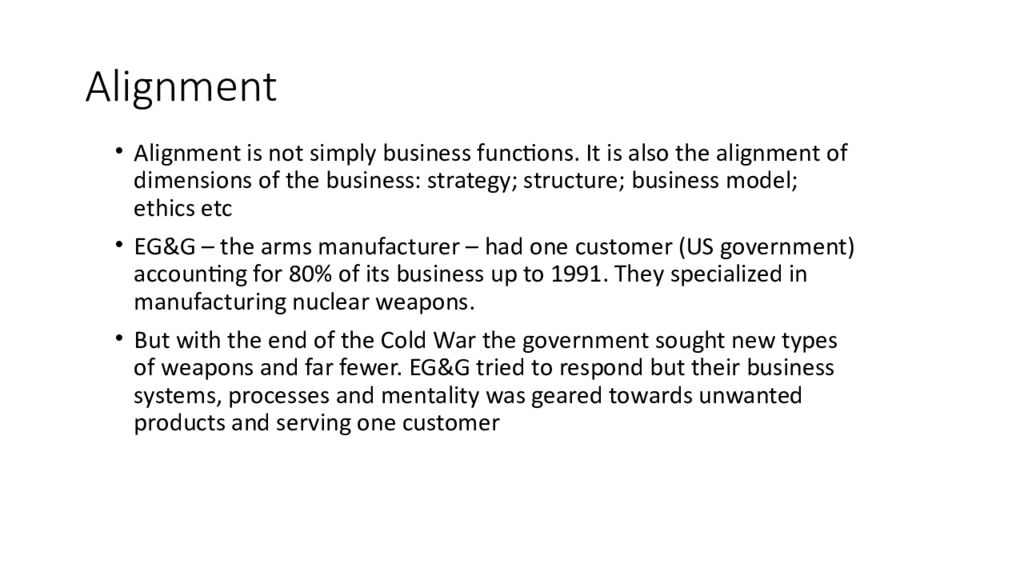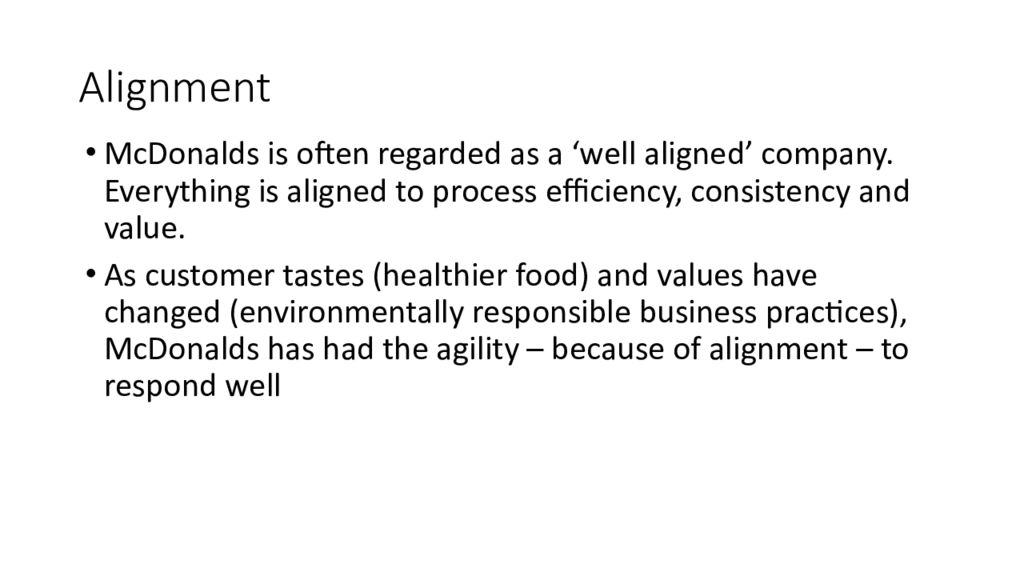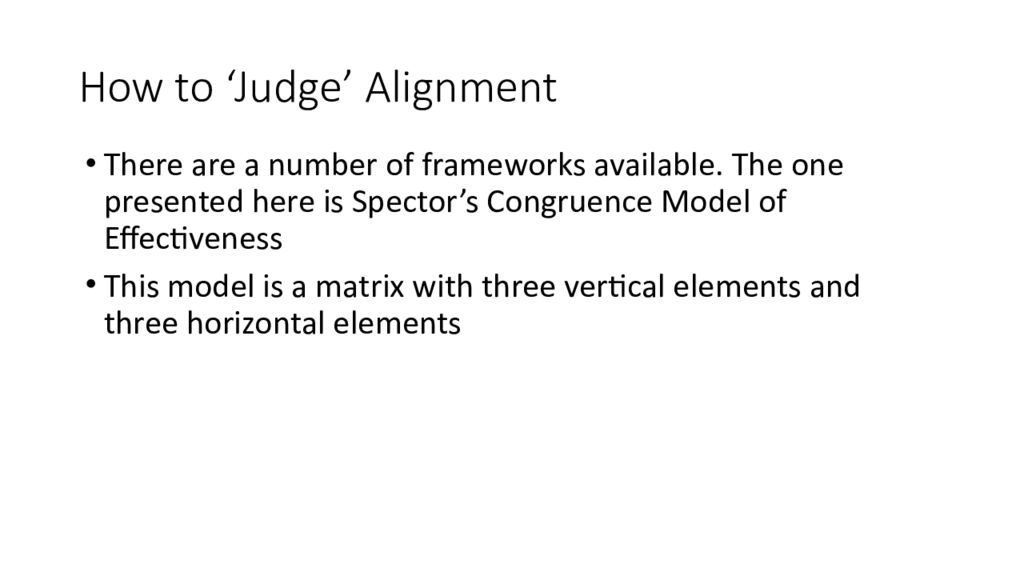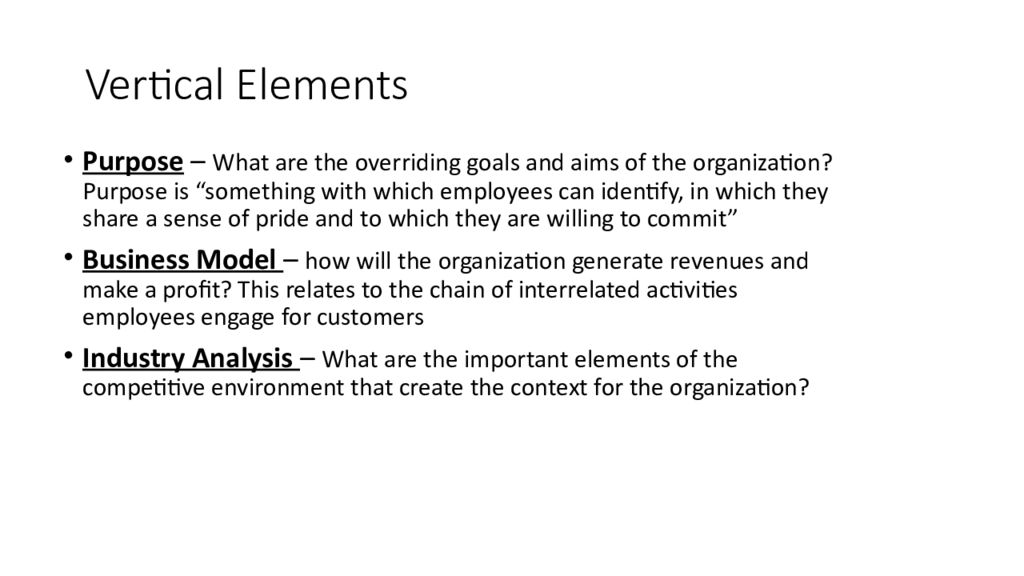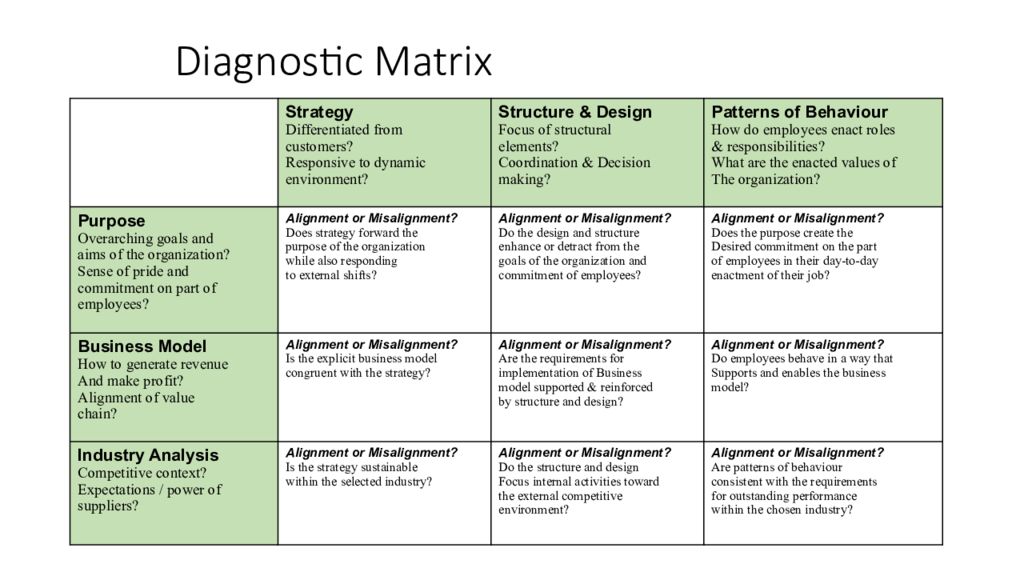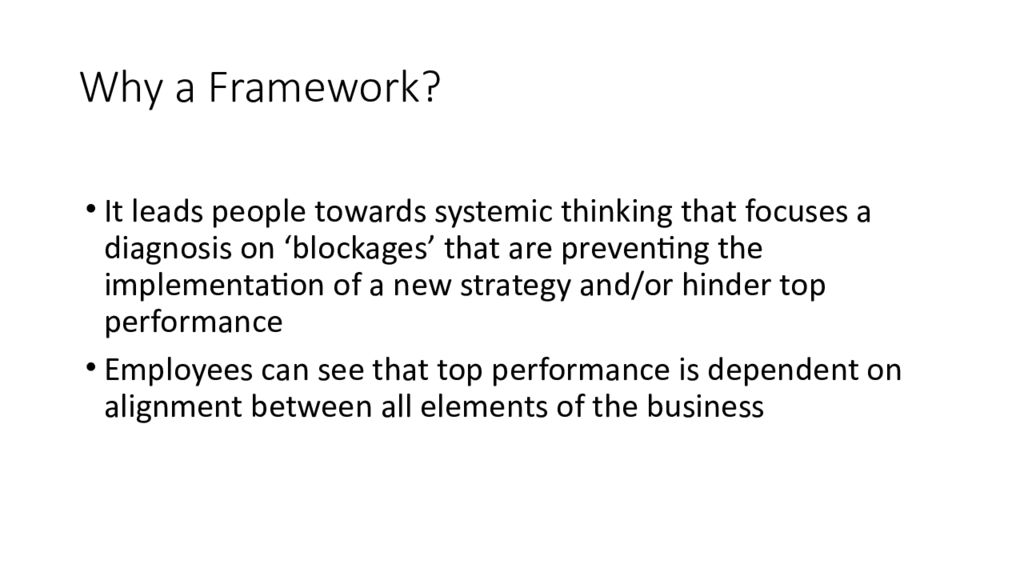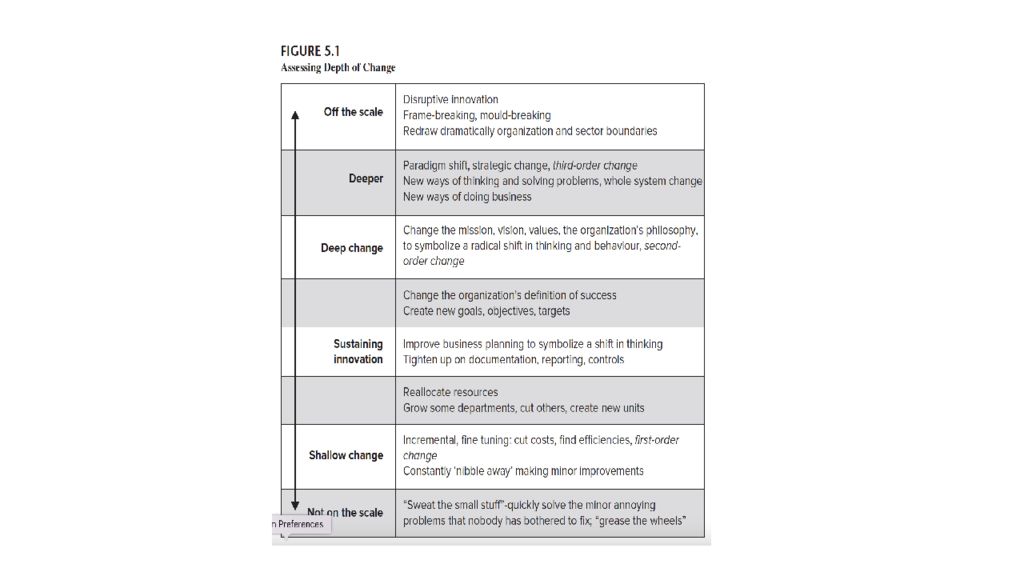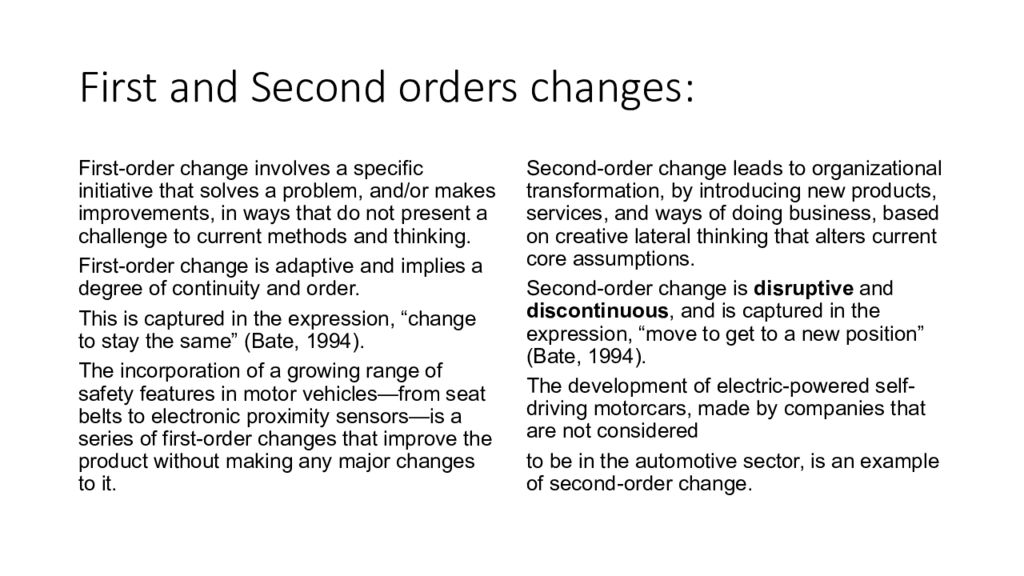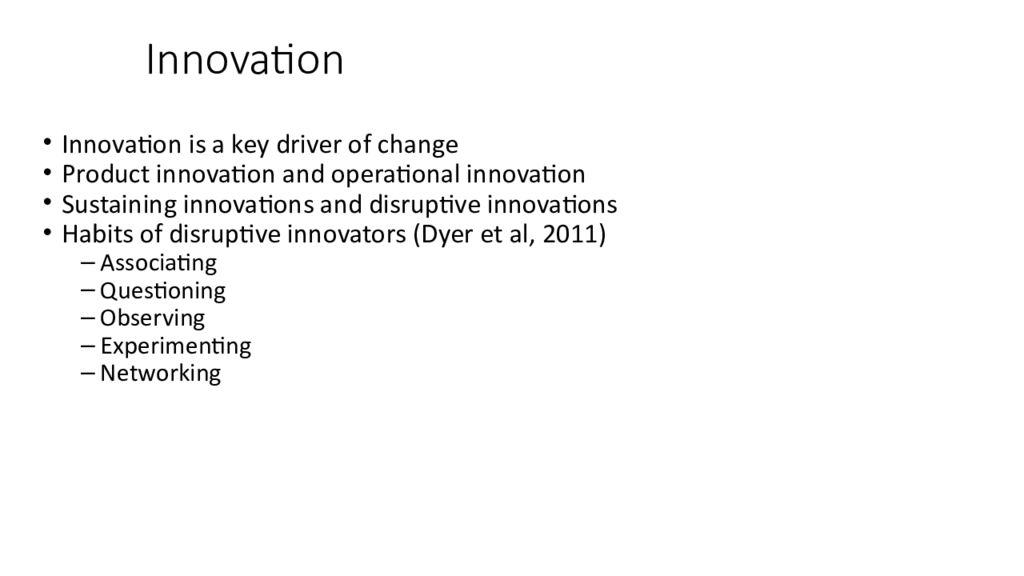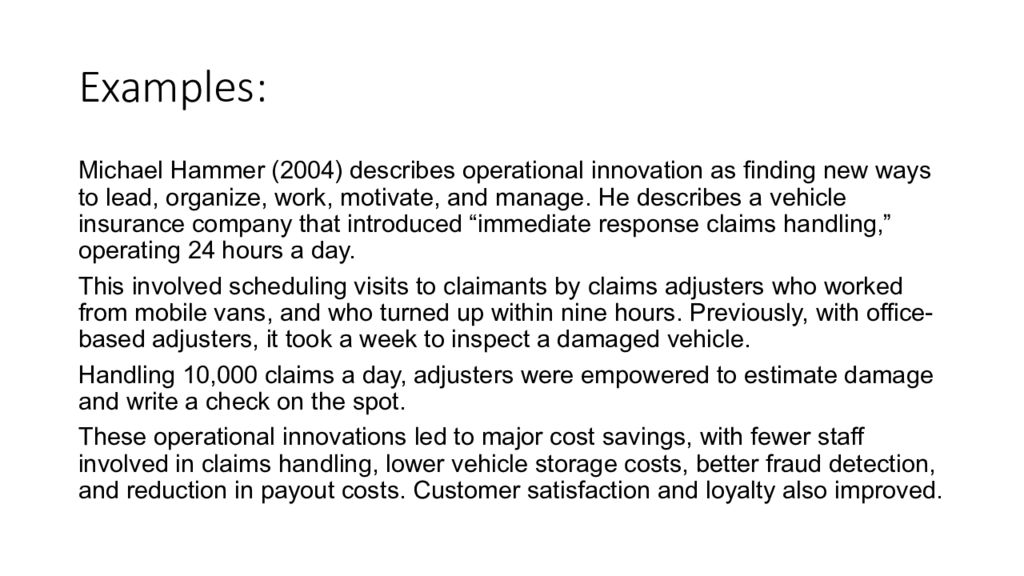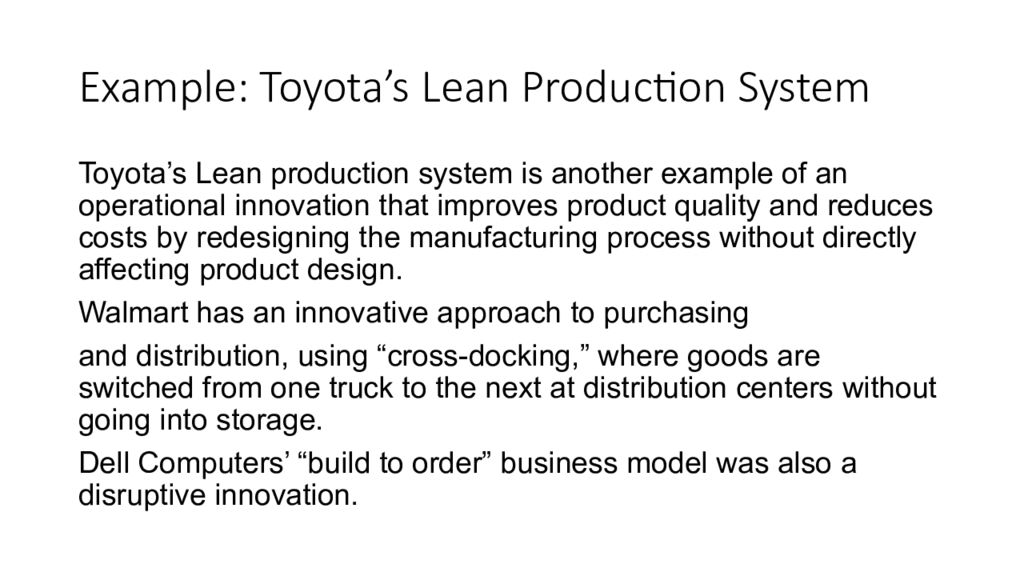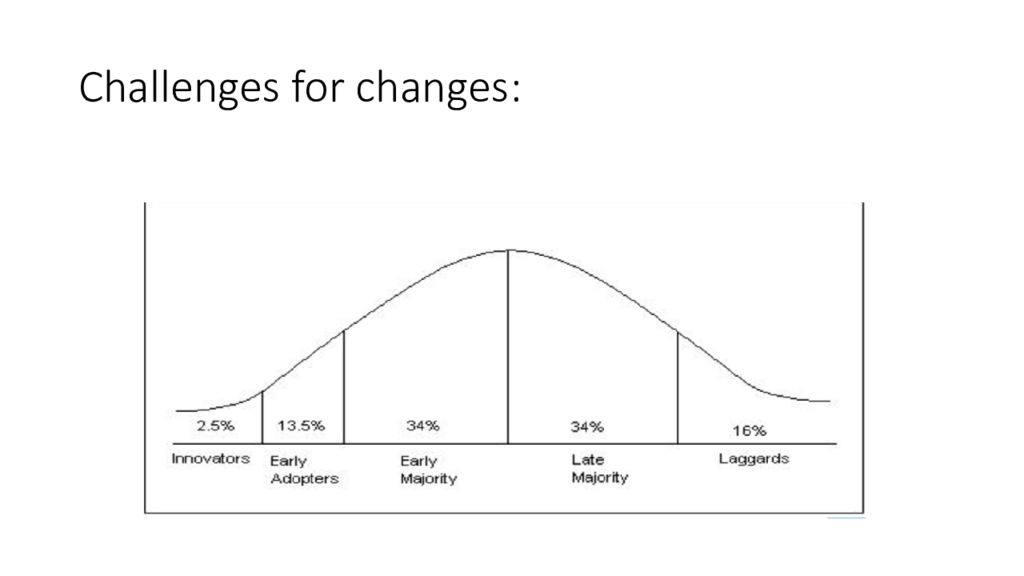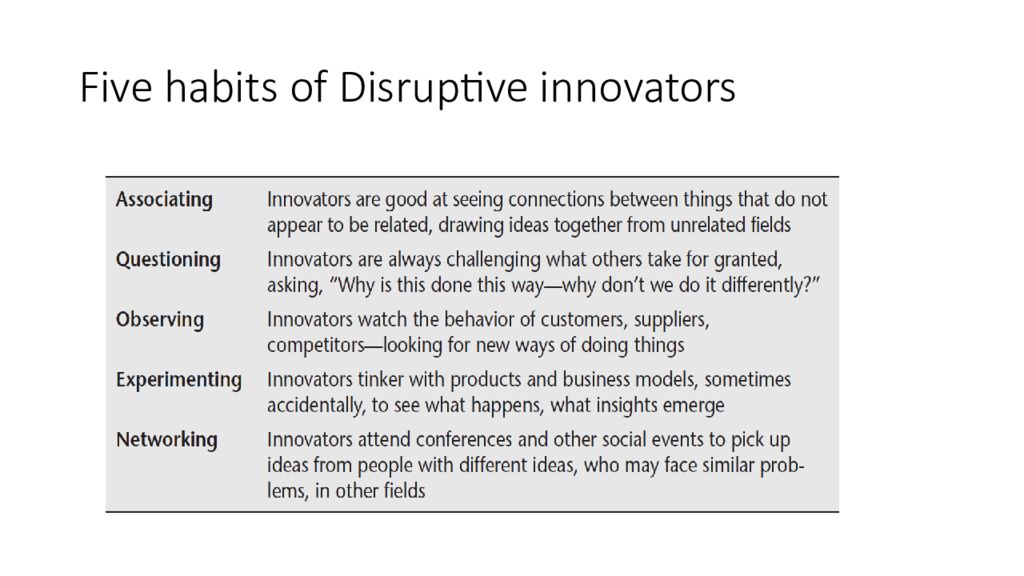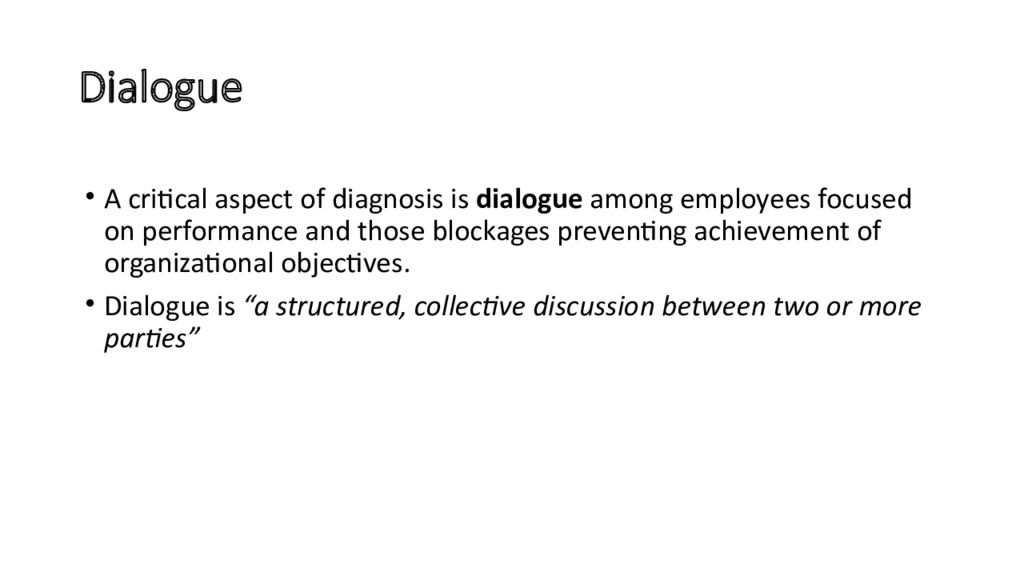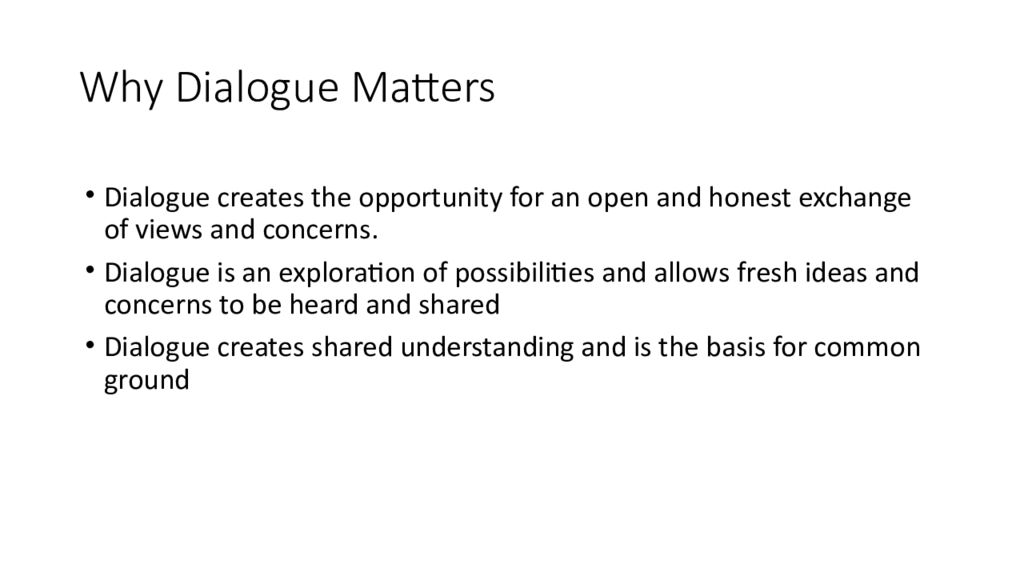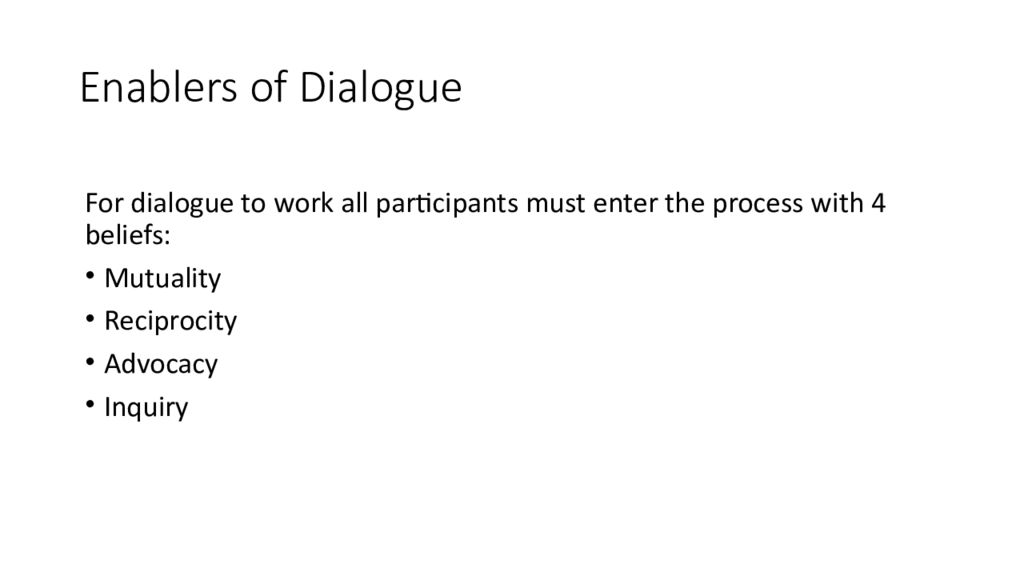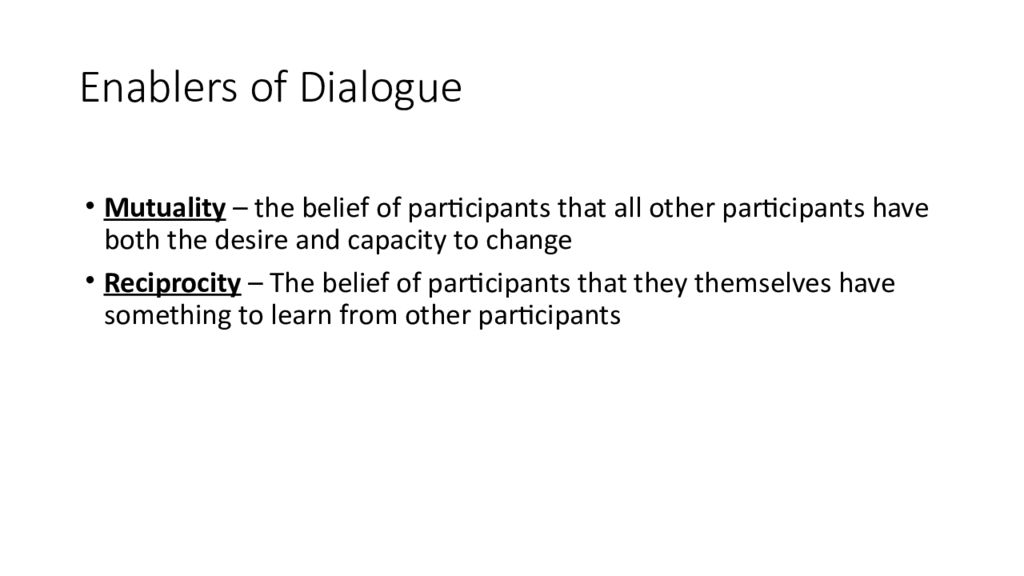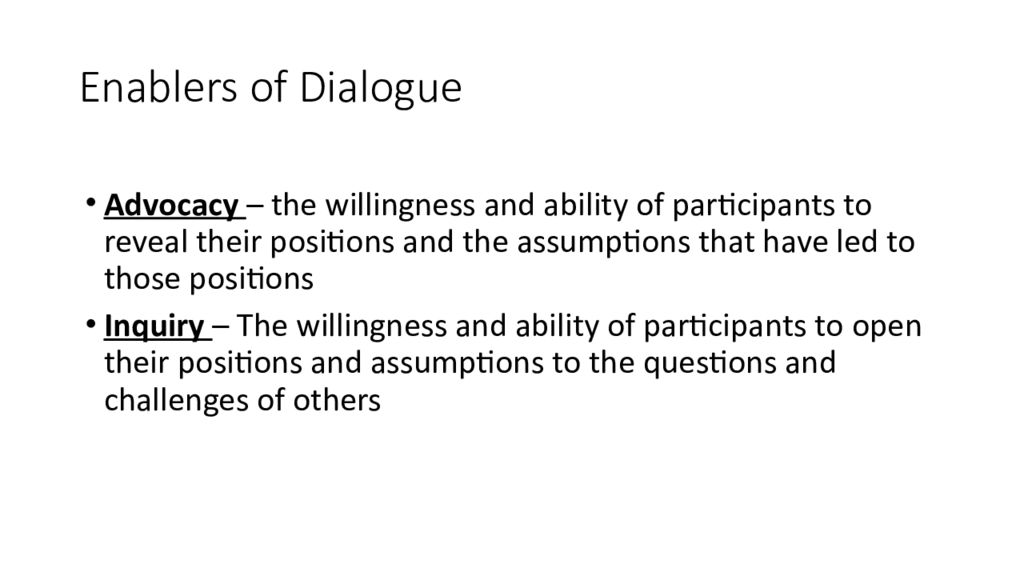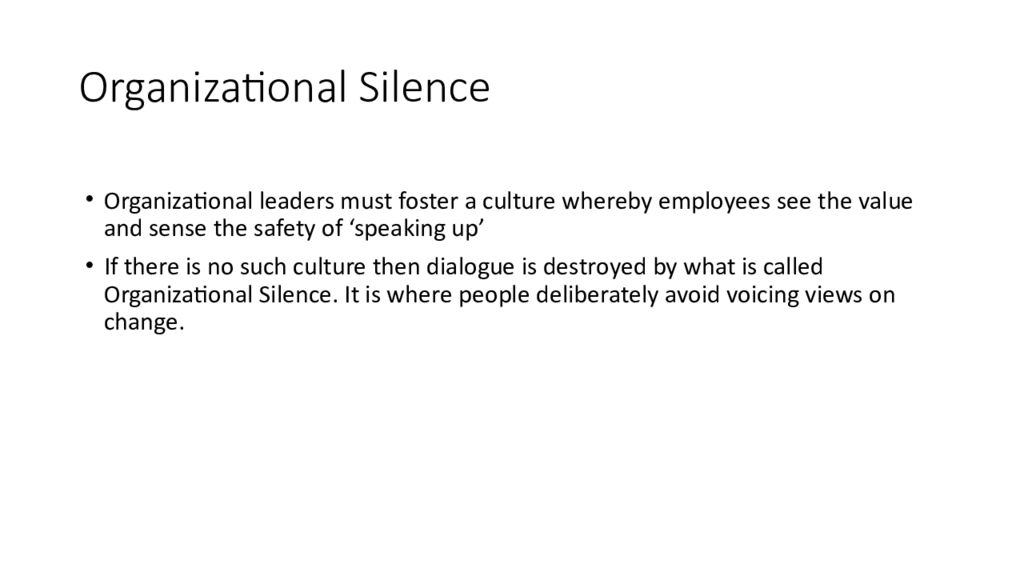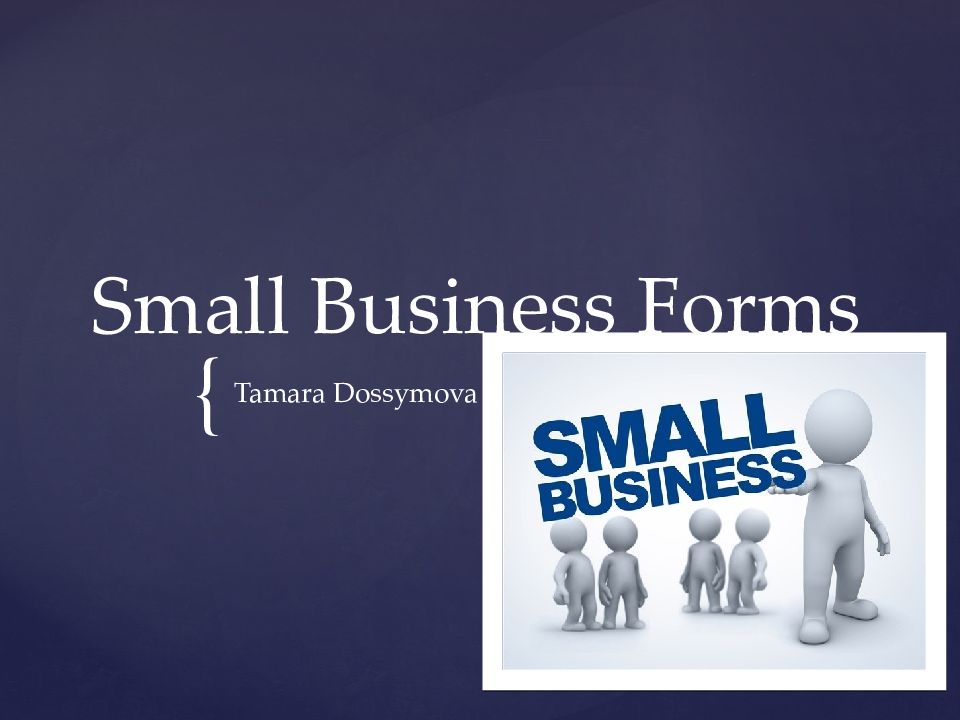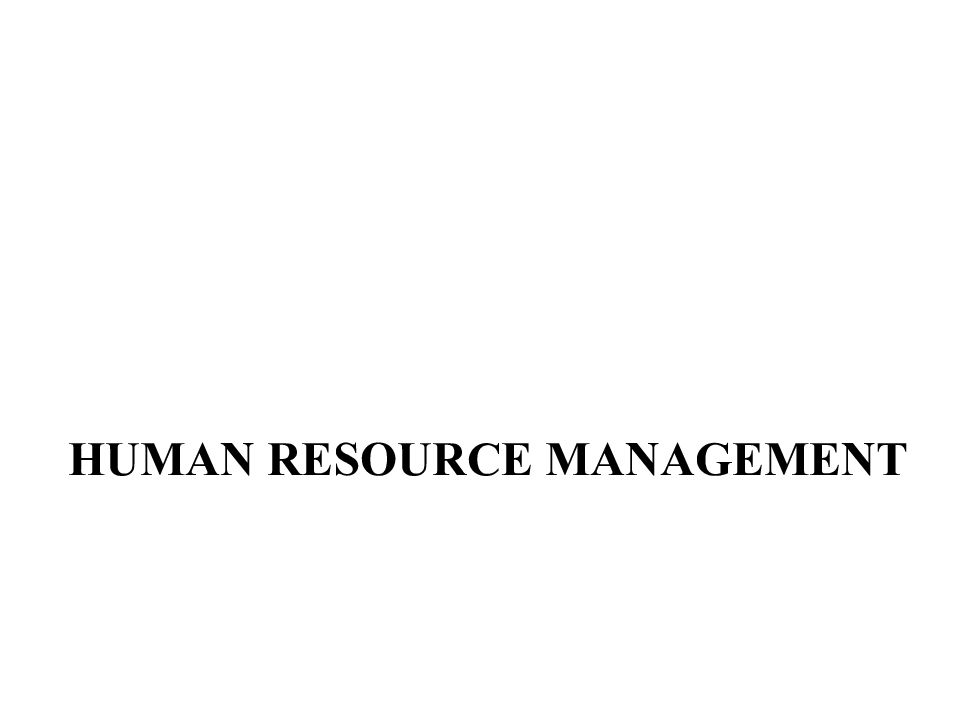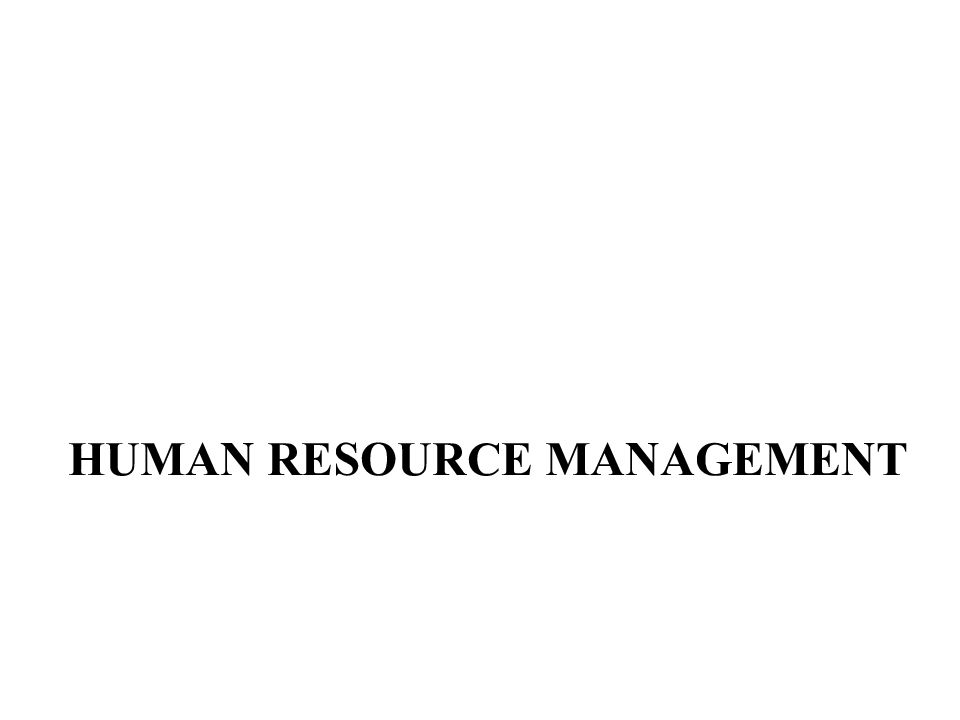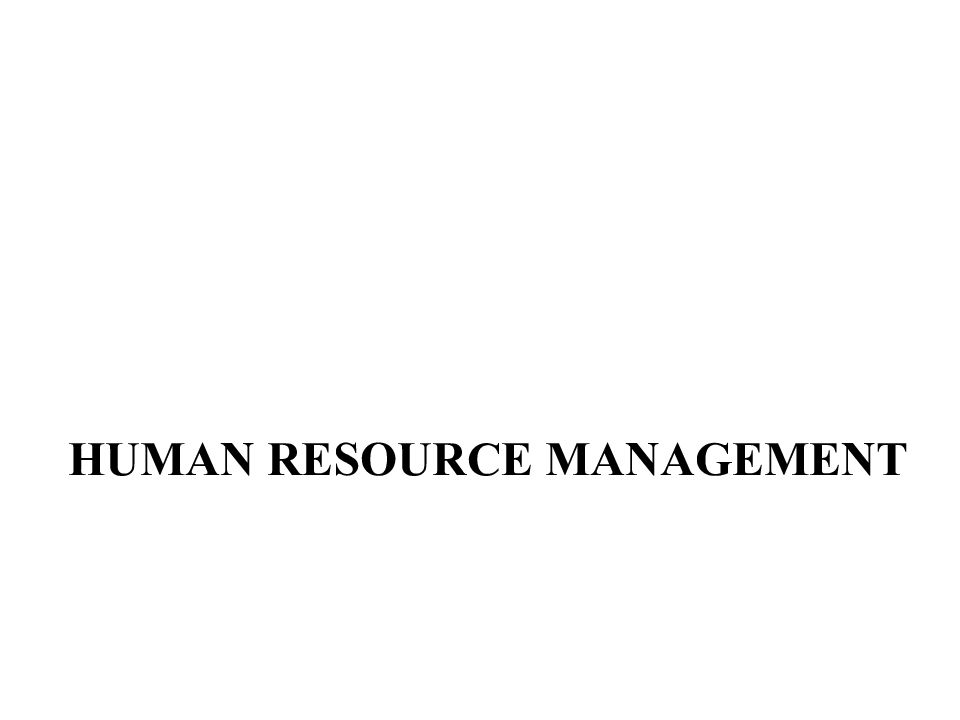Первый слайд презентации: Theories and their applications of organizational change
Lectures 5-6-7
Слайд 2: Change: a process perspective
1. Recognizing the need for change and starting the change process 2. Diagnosing what needs to be changed and formulating a vision of a preferred future state 3. Planning how to intervene in order to achieve the desired change 4. Implementing plans and reviewing progress 5. Sustaining the change 6. Leading and managing the people issues 7. Learning.
Слайд 3: Change Implementation
How leaders implement change – their decisions and actions – can lead to resistance, conflict and lasting resentment. Any leader can force change, but how can change be implemented to reduce negative impact on employees and the business?
Слайд 4: Kurt Lewin: Field Theory
Слайд 5: Kurt Lewin: Field Theory
How does our psychology influence our behaviour? How does our environment influence our behaviour? Can you think of ways that the ‘status quo’ can be disrupted?
Слайд 6: Lewin’s Formula
Lewin summarized his work by stating that Behaviour is a function of the person’s psychology and environment B= f (P,E)
Слайд 7: Person and Environment
Lewin stated that the person and the environment are inter-dependent variables that coalesce as one. A boss who lectures about change to employees will be unsuccessful employee norms and values are based on social habit…the habit must be disrupted if change is to result
Слайд 8: Break the Habit
To create real change, the social habit of employees must be broken. We do this by creating disequilibrium in the environment. It means to shock people out of their normal behaviour Nissan lost $250 per year for 8 years straight…until Ghosn shocked the company from its complacency, nothing was changing
Слайд 9: Lewin’s 3 Stage Change Model
Unfreezing Moving Refreezing Identify need for change, gain acceptance for need to change, connect people’s interests (ongoing employment) to change plans Transition people from old set of behaviours to new… re-skilling, training, coaching, new procedures etc Set the new behaviours as the acceptable standard by rewarding them (and punishing old behaviours ). Codify new behaviours in charters
Слайд 10: Organizational Development
Lewin’s research provoked a shift in social science research that led to the birth of Organizational Development (OD) as a distinct study OD views the organization as a living and malleable construct: an interaction between the internal and external environments
Слайд 11: OD Effectiveness
OD effectiveness is about maximizing interactions on various levels: Between personalities and activities of employees Between employees and their tasks Between tasks and the organizational culture Between the actual and intended culture of the organization Between the strategy of the organization and the external environment
Слайд 12: OD Effectiveness
What could we do to maximize the connections between employees and their tasks? What could we do to maximize the connections between the actual and intended culture of the organization?
Слайд 13: Organizational Development
OD (or ‘open systems thinking’) is underlined by 10 core assumptions or perspectives. These are on the next slide. We will be examining the practical application of some of these assumptions when we revisit OD initiatives later in the course
Слайд 14
Perspective Underlying Assumptions Systems Perspective Outstanding performance depends upon interactions between and among the multiple elements of organization: people, process, structure and values of the organization; and between the organization and its external environment Alignment Perspective The effectiveness of organizations will be determined by a state of congruence between people, process, structure, values and environment Participation Perspective People will become more committed to implementing solutions if they have been involved in the problem-solving process Social Capital Perspective To achieve outstanding performance, the organizational leaders seek to create a network of inter-dependent relationships that provides the basis for trust, cooperation and action Teamwork Perspective Accepting shared purpose and responsibility for inter-dependent tasks enhances coordination, commitment and creativity and supports outstanding performance Multiple Stakeholder Perspective Outstanding performance requires that organizational leaders balance the expectations of multiple stakeholders; shareholders, employees, customers, suppliers, government etc Problem Solving Perspective Conflicts over task issues can increase the quality of decisions if they occur in an environment of collaboration and trust Open Communications Perspective Open communication, especially upward in the hierarchy, creates the opportunity for learning and development while building trust and collaboration Evolution / Revolution Perspective Organizations must develop competencies to engage in both incremental (evolutionary) and fundamental (revolutionary) change Process Facilitation Perspective Individuals who reside outside of the organizational hierarchy can become both facilitators and teachers of effective implementation processes in partnership with organizational members
Слайд 15: Model of Organizational Effectiveness
Internal Context External Environment Patterns of Employee Behaviour Organizational Purpose Strategy Business Model Organizational Design Stakeholder Expectations Social / Cultural Forces Technological Change Labor Market Shifts Government Regulation Competitor Behaviour Enactment of Roles and Responsibilities Process of Interaction Among Employees Organizational Effectiveness
Слайд 16: Task Alignment
Task Alignment is another approach to change implementation It is about linking new, desired behaviours to core functions. E.g. – reinforcing health and safety by introducing equipment checks or site inspections as critical job tasks.
Слайд 17: Task Alignment
Australia Post motorcycle deliveries – a daily, formal 12 item safety inspection of the motorcycle before it is taken out on the road.
Слайд 18: Task Alignment
If you wanted to reinforce behaviors of strong ethics and integrity, how could you do it?
Слайд 19: Resistance to Change
An important theory in change implementation is resistance to change. It is experience in almost all change initiatives. Why do you think employees resist change in organizations and what has been your experience?
Слайд 20: Resistance to Change
The 5 key reasons employees resist change: They are content / secure with the status quo Change is seen by them as a threat The costs they see outweigh the advantages They think management is handling change poorly They believe the change will not succeed
Слайд 21: Continuum of Responses to Change
Commitment & Belief Involvement & Participation Support Apathy Passive Resistance Active Resistance Sabotage Let’s talk about some examples
Слайд 22: Who’s to Blame?
There is a wide held belief that much resistance to change is caused by managers. Do you agree? How do they create resistance to change?
Слайд 23: Summary
Theoretical Approach Main Theoretical Contribution How to Implement Change Lewin ’ s Field Theory Begin behavioural change by focusing on context and unfreezing existing social habits 1. Build a pervasive sense of dissatisfaction with the status quo. 2. Offer operational models for what new behavioural patterns will be. 3. Reinforce new behaviours with alterations to systems and structures Organizational Development Organizations are open, dynamic systems 1. Target entire organizational system for change. 2.Create a climate of open discussion and upward feedback concerning the value of change 3. Call on process consultants to facilitate intervention Task Alignment Link desired new behaviours to requirement of performing key tasks in job 1. Analyze and identify key performance indicators and behavioural implications required for outstanding performance. 2. Attach requirements for new behaviour to new strategic objectives of organization. 3. Build line management support for change effort. Change Resistance Employee resistance often derives from the actions of change leaders 1. Include employees in diagnostic and learning process 2. Learn from the reasons behind employee resistance 3. Deal in a timely manner with lingering resistance by individual employees
Слайд 24: Case Study
We will have a look at a case study together (which is also on the L Drive and in Moodle) “Leading Change at First St. Louis Bank”. This explores the key points from the material we have been covering.
Слайд 26: Diagnosis
First there comes a recognition that there needs to be change. Then comes diagnosis…diagnosis is a learning exercise: we seek to learn what needs to change and why
Слайд 27: Diagnosis: What needs to change?
New Business Model Business recognizes need for change and change objective Business identifies what needs to change in order to achieve change objective (e.g. skills, behaviours & competencies) SKILLS COMPETENCIES BEHAVIOURS FUTURE SKILLS COMPETENCIES BEHAVIOURS NOW Business recognizes need for change and change objective 1 st Diagnostic stage: what are the current skills, competencies and behaviours ? 2 nd Diagnostic stage: what are the required skills, competencies and behaviours ? The GAP between current and desired becomes the focal point for change
Слайд 28: Diagnosis: How to change?
Employees should be involved in identifying ways to “make a transition or close the gap”…in other words: HOW to realize a changed state. What ways can you think of to change behaviours, skills and competencies?
Слайд 29: Levels of Diagnostic Focus
We can diagnose change needs at 3 levels: Level Inquiry Focus Individual Are jobs designed in such a way as to enhance commitment and creativity? Group Do work teams perform as high performance teams? Organizational Do the various units of the organization work in a synergistic way to maximize overall performance?
Слайд 30: Alignment
Whatever the focus for change, organizations consist of multiple units that must all be aligned in their efforts. You cannot introduce a new product line if the sales system is not appropriate; you cannot change culture if the core values are misaligned to the new cultural direction
Слайд 31: Alignment
Alignment is not simply business functions. It is also the alignment of dimensions of the business: strategy; structure; business model; ethics etc EG&G – the arms manufacturer – had one customer (US government) accounting for 80% of its business up to 1991. They specialized in manufacturing nuclear weapons. But with the end of the Cold War the government sought new types of weapons and far fewer. EG&G tried to respond but their business systems, processes and mentality was geared towards unwanted products and serving one customer
Слайд 32: Alignment
McDonalds is often regarded as a ‘well aligned’ company. Everything is aligned to process efficiency, consistency and value. As customer tastes (healthier food) and values have changed (environmentally responsible business practices), McDonalds has had the agility – because of alignment – to respond well
Слайд 33: How to ‘Judge’ Alignment
There are a number of frameworks available. The one presented here is Spector’s Congruence Model of Effectiveness This model is a matrix with three vertical elements and three horizontal elements
Слайд 34: Vertical Elements
Purpose – What are the overriding goals and aims of the organization? Purpose is “something with which employees can identify, in which they share a sense of pride and to which they are willing to commit” Business Model – how will the organization generate revenues and make a profit? This relates to the chain of interrelated activities employees engage for customers Industry Analysis – What are the important elements of the competitive environment that create the context for the organization?
Слайд 35: Horizontal Elements
Strategy – What are the means by which the organization or business unit is differentiating itself from its competitors? How responsive is that strategy to changing expectations of customers? Design – What are the means by which the organization will achieve required levels of creativity, responsiveness and coordination? Behaviours – What are the enacted values of the organization, the belief systems, norms and assumptions that guide and shape everyday behaviour?
Слайд 36: Diagnostic Matrix
Strategy Differentiated from customers? Responsive to dynamic environment? Structure & Design Focus of structural elements? Coordination & Decision making? Patterns of Behaviour How do employees enact roles & responsibilities? What are the enacted values of The organization? Purpose Overarching goals and aims of the organization? Sense of pride and commitment on part of employees? Alignment or Misalignment? Does strategy forward the purpose of the organization while also responding to external shifts? Alignment or Misalignment? Do the design and structure enhance or detract from the goals of the organization and commitment of employees? Alignment or Misalignment? Does the purpose create the Desired commitment on the part of employees in their day-to-day enactment of their job? Business Model How to generate revenue And make profit? Alignment of value chain? Alignment or Misalignment? Is the explicit business model congruent with the strategy? Alignment or Misalignment? Are the requirements for implementation of Business model supported & reinforced by structure and design? Alignment or Misalignment? Do employees behave in a way that Supports and enables the business model? Industry Analysis Competitive context? Expectations / power of suppliers? Alignment or Misalignment? Is the strategy sustainable within the selected industry? Alignment or Misalignment? Do the structure and design Focus internal activities toward the external competitive environment? Alignment or Misalignment? Are patterns of behaviour consistent with the requirements for outstanding performance within the chosen industry?
Слайд 37: Why a Framework?
It leads people towards systemic thinking that focuses a diagnosis on ‘blockages’ that are preventing the implementation of a new strategy and/or hinder top performance Employees can see that top performance is dependent on alignment between all elements of the business
Слайд 39: First and Second orders changes:
First-order change involves a specific initiative that solves a problem, and/or makes improvements, in ways that do not present a challenge to current methods and thinking. First-order change is adaptive and implies a degree of continuity and order. This is captured in the expression, “change to stay the same” (Bate, 1994). The incorporation of a growing range of safety features in motor vehicles—from seat belts to electronic proximity sensors—is a series of first-order changes that improve the product without making any major changes to it. Second-order change leads to organizational transformation, by introducing new products, services, and ways of doing business, based on creative lateral thinking that alters current core assumptions. Second-order change is disruptive and discontinuous, and is captured in the expression, “move to get to a new position” (Bate, 1994). The development of electric-powered self-driving motorcars, made by companies that are not considered to be in the automotive sector, is an example of second-order change.
Слайд 40: Third order change?
What will come after electric and driverless cars, and “phone app taxi services”? Walmart and other retail supermarkets sell motorcars thus threatening established dealer networks. Given current global trends in house prices, will property developers and real estate agents offer discounted or free motorcars with house and apartment purchases as an inducement to customers? Will dealers in congested cities (Beijing, London, Mumbai, New York) provide free motorcycles with the cars that they sell, so that customers can make their own “park and ride” arrangements to get to work? Will we continue to own cars anyway, or hire them when we need them, ordering them by iPhone? These developments, and others more difficult to predict, are examples of third-order change that, in some sectors, could become the norm.
Слайд 41: Innovation
Innovation is a key driver of change Product innovation and operational innovation Sustaining innovations and disruptive innovations Habits of disruptive innovators (Dyer et al, 2011) Associating Questioning Observing Experimenting Networking
Слайд 42: Examples:
Michael Hammer (2004) describes operational innovation as finding new ways to lead, organize, work, motivate, and manage. He describes a vehicle insurance company that introduced “immediate response claims handling,” operating 24 hours a day. This involved scheduling visits to claimants by claims adjusters who worked from mobile vans, and who turned up within nine hours. Previously, with office-based adjusters, it took a week to inspect a damaged vehicle. Handling 10,000 claims a day, adjusters were empowered to estimate damage and write a check on the spot. These operational innovations led to major cost savings, with fewer staff involved in claims handling, lower vehicle storage costs, better fraud detection, and reduction in payout costs. Customer satisfaction and loyalty also improved.
Слайд 43: Example: Toyota’s Lean Production System
Toyota’s Lean production system is another example of an operational innovation that improves product quality and reduces costs by redesigning the manufacturing process without directly affecting product design. Walmart has an innovative approach to purchasing and distribution, using “cross-docking,” where goods are switched from one truck to the next at distribution centers without going into storage. Dell Computers’ “build to order” business model was also a disruptive innovation.
Слайд 44: Sustaining innovation vs Disruptive innovation
Sustaining innovations improve existing products and processes: a more fuel-efficient motorcar, streamlining an administrative process. Disruptive innovations introduce wholly new processes and services, such as an all-electric motorcar or social networking. Disruptive innovations imply deep transformational change.
Слайд 48: Dialogue
A critical aspect of diagnosis is dialogue among employees focused on performance and those blockages preventing achievement of organizational objectives. Dialogue is “a structured, collective discussion between two or more parties”
Слайд 49: Why Dialogue Matters
Dialogue creates the opportunity for an open and honest exchange of views and concerns. Dialogue is an exploration of possibilities and allows fresh ideas and concerns to be heard and shared Dialogue creates shared understanding and is the basis for common ground
Слайд 50: Enablers of Dialogue
For dialogue to work all participants must enter the process with 4 beliefs: Mutuality Reciprocity Advocacy Inquiry
Слайд 51: Enablers of Dialogue
Mutuality – the belief of participants that all other participants have both the desire and capacity to change Reciprocity – The belief of participants that they themselves have something to learn from other participants
Слайд 52: Enablers of Dialogue
Advocacy – the willingness and ability of participants to reveal their positions and the assumptions that have led to those positions Inquiry – The willingness and ability of participants to open their positions and assumptions to the questions and challenges of others
Слайд 53: Organizational Silence
Organizational leaders must foster a culture whereby employees see the value and sense the safety of ‘speaking up’ If there is no such culture then dialogue is destroyed by what is called Organizational Silence. It is where people deliberately avoid voicing views on change.
Последний слайд презентации: Theories and their applications of organizational change: Organizational Silence
Organizational Silence might be a by-product of: Disinterest / disengagement Fear – for job or the process itself Sense of inevitability – change will happen anyway, why bother to speak up Protectionism – to speak out gets us noticed…stay quiet and protect our interests Confusion – do not understand what is going on

